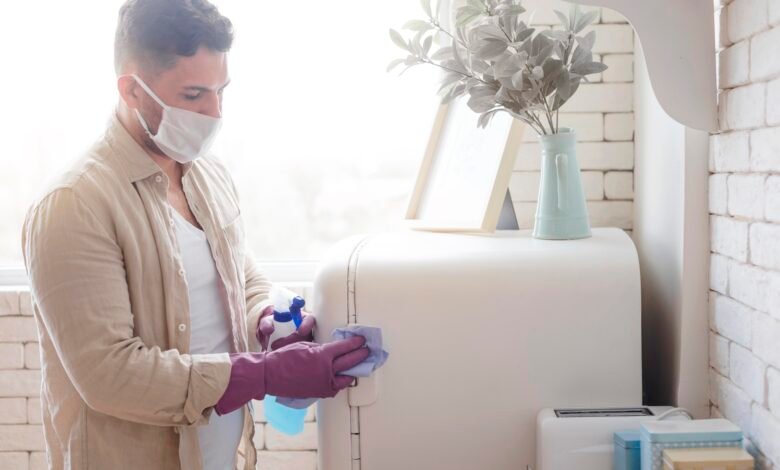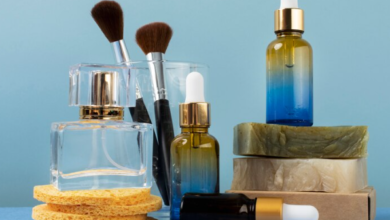How to Disinfect Your House After the Flu

The flu can leave your body and home feeling under siege. Once symptoms subside, disinfecting your house is crucial to eliminate lingering germs and prevent the virus from spreading to others in your household. Here’s a detailed guide to effectively sanitize your home after the flu.
1. Understand the Flu Virus
Flu viruses can survive on surfaces for up to 48 hours. Disinfecting high-touch surfaces and commonly used areas in your home minimizes the risk of transmission. Knowing where germs are likely to linger helps you focus your cleaning efforts.
2. Gather the Right Cleaning Supplies
Having the right cleaning supplies ensures effective disinfection. Here’s what you’ll need:
- Disinfectant Wipes or Spray: Choose EPA-approved products that combat flu viruses.
- Disposable Gloves: To protect your hands from germs and cleaning chemicals.
- Microfiber Cloths: For cleaning and dusting surfaces.
- Vacuum Cleaner with HEPA Filter: To trap tiny particles and allergens.
- Laundry Detergent: For washing linens and fabrics.
- Face Mask: Optional, but helpful to prevent inhaling particles during cleaning.
3. Focus on High-Touch Areas
Flu germs spread rapidly on high-touch surfaces. Pay special attention to the following:
- Doorknobs and Handles
- Light Switches
- Remote Controls
- Tabletops
- Toilets and Bathroom Fixtures
- Refrigerator and Appliance Handles
Use disinfectant sprays or wipes and allow the surface to remain wet for the recommended contact time before wiping it dry.
4. Clean Soft Surfaces
Soft surfaces like couches, rugs, and curtains can harbor flu germs.
- Vacuum Upholstery: Use a vacuum cleaner with a HEPA filter to remove dust and particles.
- Disinfect Soft Furnishings: Spray them with fabric-safe disinfectant sprays.
- Wash Linens and Blankets: Use hot water and laundry detergent to clean any linens, pillowcases, and blankets used by the sick person.
5. Sanitize the Bedroom
The bedroom of the flu-infected person needs thorough disinfection.
- Wash Bedding: Strip the bed and wash all bedding in hot water.
- Disinfect the Mattress: Use a disinfectant spray or vacuum the mattress surface.
- Clean Bedside Items: Sanitize any books, alarm clocks, or devices kept near the bed.
6. Deep Clean the Bathroom
The bathroom is a hotspot for flu germs.
- Disinfect Surfaces: Focus on faucets, toilet handles, and countertops.
- Replace Toothbrushes: Replace the sick person’s toothbrush or disinfect it with boiling water.
- Wash Towels: Replace all used towels and wash them in hot water.
7. Clean Kitchen Surfaces
Prevent flu germs from contaminating food preparation areas.
- Disinfect Countertops: Wipe down all surfaces with a disinfectant.
- Sanitize Appliances: Pay attention to handles and buttons on microwaves, toasters, and refrigerators.
- Wash Dishes: Run all dishes through a dishwasher at high temperatures or wash by hand using hot water and dish soap.
8. Replace Air Filters
Flu germs can linger in the air. Replacing your HVAC filters or using an air purifier with a HEPA filter helps remove airborne particles. Open windows to improve ventilation and circulate fresh air.
9. Use Steam Cleaning for Floors
Hard floors should be cleaned with disinfectants or steam cleaners. For carpets, vacuum thoroughly and consider professional cleaning if the flu was severe.
10. Handle Laundry Properly
Clothing and linens used by the sick person must be washed separately.
- Use hot water and laundry detergent.
- Dry on a high heat setting.
- Disinfect the laundry basket afterward.
11. Dispose of Trash Carefully
Remove tissues, disposable masks, and other waste used by the flu patient.
- Use a garbage bag lined with a sturdy plastic bag.
- Wear gloves when disposing of the trash.
- Sanitize the trash can once emptied.
12. Keep Yourself Protected During Cleaning
- Wear gloves and wash your hands thoroughly after cleaning.
- Avoid touching your face while disinfecting surfaces.
- Consider wearing a mask to avoid inhaling any lingering germs.
13. Maintain Hygiene Practices
Prevent future infections by reinforcing healthy habits:
- Regular handwashing with soap for at least 20 seconds.
- Covering your mouth and nose when sneezing or coughing.
- Cleaning and disinfecting high-touch surfaces regularly.
14. Final Thoughts
Disinfecting your house after the flu is essential to protect your household and break the cycle of illness. With careful attention to detail and the use of effective cleaning practices, you can restore a healthy and germ-free environment for your family.
By following these steps, your home will be ready for a fresh and healthier start!




